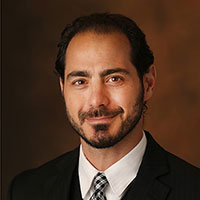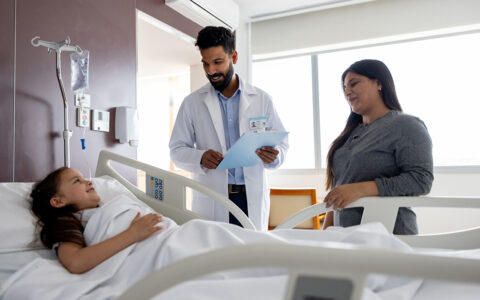Caregivers of infants in need of surgery for congenital skull abnormalities saw their stress levels drop three months after their child’s operation, only to rise again after six months had passed, a recent study has shown.
“Although we’re primarily treating the infant for their condition, craniosynostosis, we have to consider supporting caregivers throughout this whole process as well,” said Christopher Bonfield, M.D., an associate professor of neurological surgery at Vanderbilt University Medical Center, and a coauthor of an article in the Journal of Neurosurgery about caregiver stress related to craniosynostosis.
“Elevated stress in caregivers has a tremendous impact on children’s behavioral outcomes. It can affect their feeding and growth patterns and be a risk factor for worse developmental and psychological outcomes,” Bonfield said.
In their article, the researchers also noted that pediatric surgical interventions heighten caregiver stress levels and has been associated with post-traumatic stress.
Craniosynostosis, a Growing Problem
In craniosynostosis, the sutures – flexible, fibrous joints – between the bony plates forming an infant’s skull fuse too early, before the brain is fully formed. As the brain grows, the skull can become quite misshapen, leading to craniofacial deformity.
According to the CDC, the condition affects about 1 in 2,500 infants in the United States. For unknown reasons, incidence of the problem is increasing.
“It may be that pediatricians are better at recognizing it now and send families for specialized care faster,” Bonfield said. “Twenty years ago, they might have said a child had an oddly shaped head. We didn’t have the same treatments available then, as well.”
Vanderbilt treats about 50 cases per year, he added, making it a high-volume center.
“Sometimes we do an open operation, making an incision ear to ear across the top of the head, and making other cuts to produce a more rounded head shape,” Bonfield explained. “We can also do minimally invasive endoscopic surgery, in which we remove only the fused area and let the brain grow and push the skull out.”
Stress Can Create Ongoing Problems
“This is not a do-the-surgery-and-get-over-it type of situation. We need to think seriously about parental stress before and after surgery, since that stress can so greatly affect how a child does and recovers,” Bonfield said.
Children with craniosynostosis, for instance, can be at elevated risk for learning disabilities.
An earlier study of caregivers for infants who had corrective craniofacial surgeries found higher stress among the adults as long as four years after surgery, the authors stated.
“We’re finding out that there are specific populations of caregivers at highest risk for stress and that we should perhaps look out especially for them and provide some resources or guidance,” Bonfield said.
Caregiver Stress Vacillates
The research team worked with 106 caregivers, comprised primarily of mothers (58 percent) and fathers (38 percent). Caregivers were mostly Caucasian (84 percent) and between the ages of 30 to 39 (48 percent) or 20 to 29 (40 percent).
Forty-five percent of caregivers worked between 35 and 45 hours weekly; 29 percent were unemployed or stayed home full-time. Half used public insurance.
The researchers measured caregiver stress at baseline (preoperatively) and again at three and six months postoperatively. They used two instruments, the Demographics and Parenting Stress Index-Short Form, and the Pediatric Inventory for Parents.
“At baseline, the caregivers had higher stress than an average parent population, which makes sense since they face a problem needing surgery,” Bonfield said. “At three months follow-up, the stress levels went down on average, and then at six months they went back up to preoperative levels.”
Risk Factors
Female caregivers experienced higher stress at follow-up than male ones, a finding in line with similar studies, wrote the researchers, who suggested this could be due to instrument sensitivity or role restrictions among women.
Other social factors that increased baseline parental stress were lower income and insurance type, particularly among those having to depend on public insurance, Bonfield said.
Having more children in the household also increased parental stress in the short-term, though the researchers wrote “at subsequent follow-up, having siblings in the household potentially alleviates stress, with siblings interacting with either the patient or the caregivers themselves.”
Higher income proved protective at all time points.
Caregivers of children who underwent minimally-invasive endoscopic surgery had lower stress at all three points tested, compared to those whose children underwent open surgery, which involves a larger operation and slower recovery.
Peer Support Can Help
“We don’t usually talk to parents about how they feel or give them resources, but we should,” Bonfield said.
The researchers note that support may be particularly beneficial three months after surgery.
One resource to which clinicians can steer parents is a large Facebook group for parents of children with craniosynostosis.
“Parents tell me they learn a lot talking to other moms. Parent-to-parents contact can be a really powerful tool.”
For some parents, referrals to social workers for help accessing the need for individual therapy may also make sense, Bonfield suggested.






